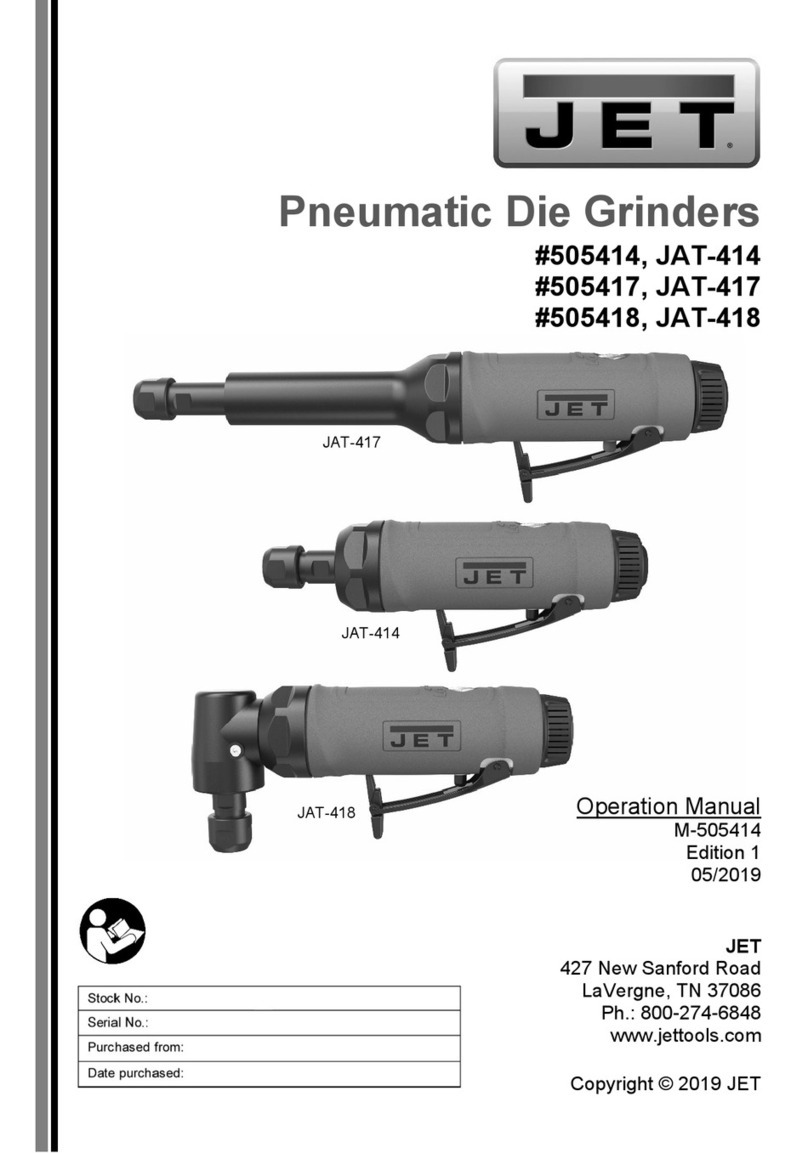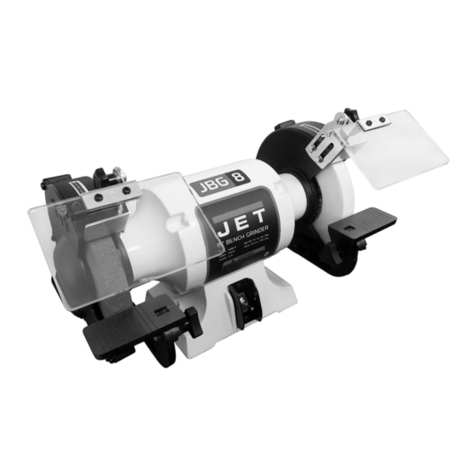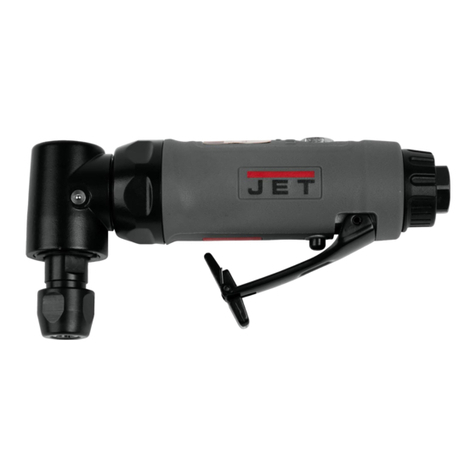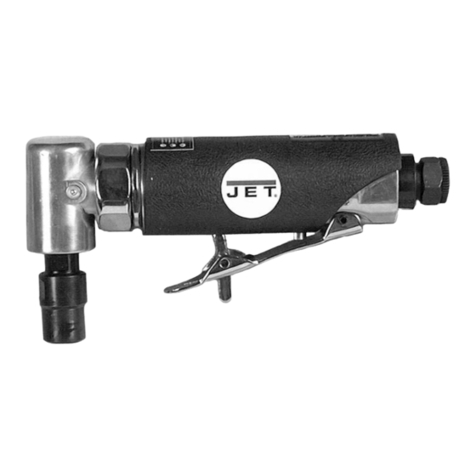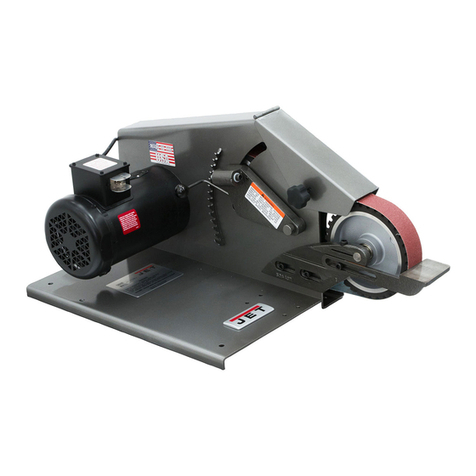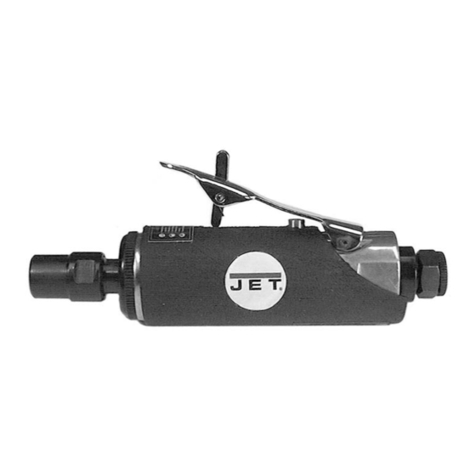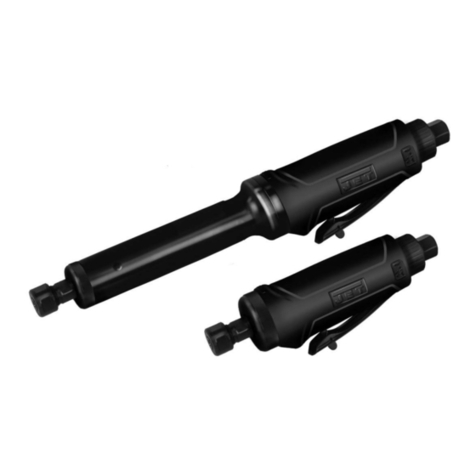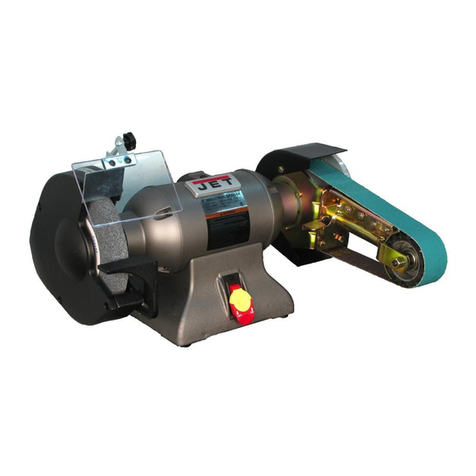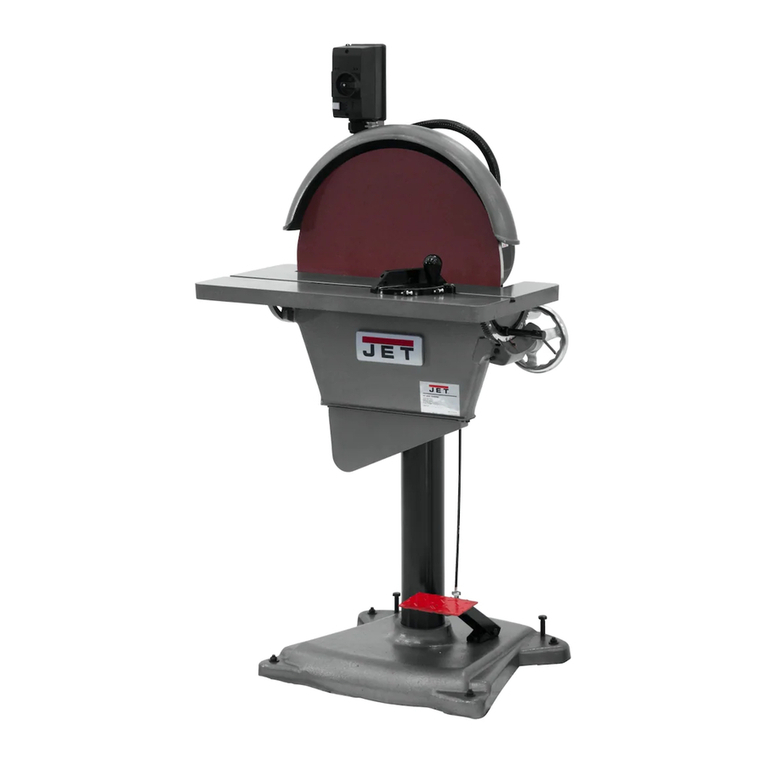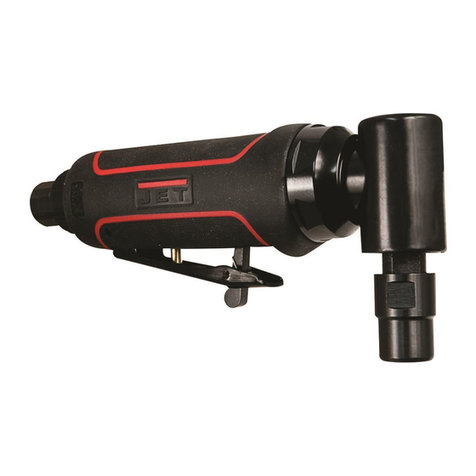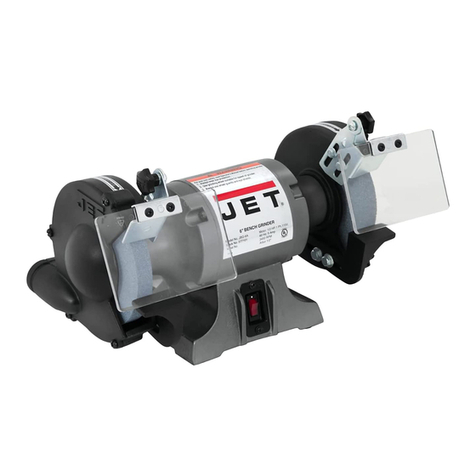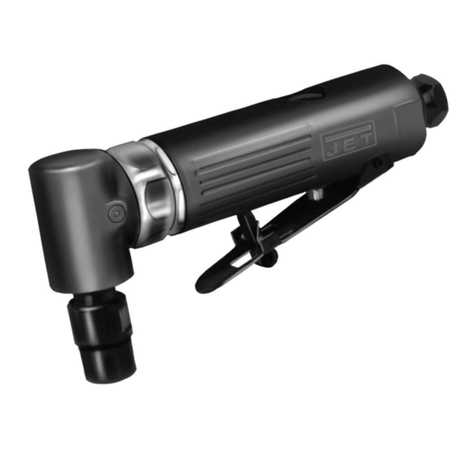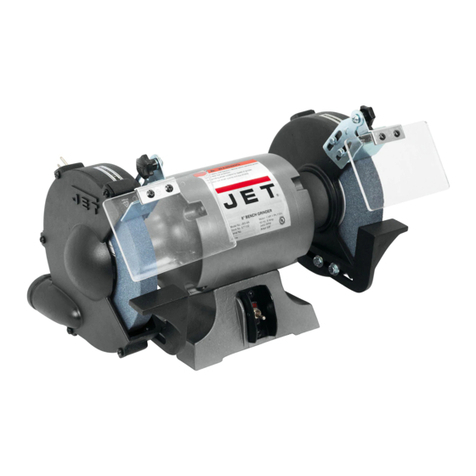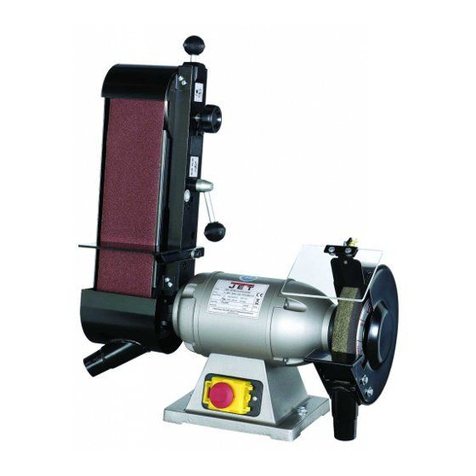GB - ENGLISH
Operating Instructions
Dear Customer,
Many thanks for the confidence you have shown in us with the purchase of your new JET-machine. This manual has been
prepared for the owner and operators of a JET JBG-150/200 bench grinder to promote safety during installation, operation
and maintenance procedures. Please read and understand the information contained in these operating instructions and the
accompanying documents. To obtain maximum life and efficiency from your machine, and to use the machine safely, read
this manual thoroughly and follow instructions carefully.
…Table of Contents
1. Declaration of conformity
2. JET Warranty
3. Safety
Authorized use
General safety notes
Remaining hazards
4. Machine specifications
Technical data
Noise emission
Contents of delivery
5. Transport and start up
Transport and installation
Assembly
Mains connection
Starting operation
6. Machine operation
7. Setup and adjustments
Changing the abrasive wheel
Adjusting the spark guard
Adjusting the tool rest
8. Maintenance and inspection
9. Troubleshooting
10. Available accessories
1. Declaration of conformity
On our own responsibility we hereby
declare that this product complies
with the regulations* listed on page 2.
Designed in consideration with the
standards**.
2. JET Group Warranty
The JET Group makes every effort to
assure that its products meet high
quality and durability standards and
warrants to the original retail
consumer/purchaser of our products
that each product be free from
defects in materials and workmanship
as follows:
2 YEARS ON ALL MECHANICAL
PARTS
1 YEAR ON ALL ELECTRICAL
PARTS
This Warranty does not apply to
defects due to directly or indirectly
misuse, abuse, negligence or
accidents, normal wear-and-tear,
repair or alterations outside our
facilities, or to a lack of maintenance.
The Jet group limits all implied
warranties to the period specified
above, from the date the product was
purchased at retail.
To take advantage of this warranty,
the product or part must be returned
for examination, postage prepaid, to
an authorized repair station
designated by our office.
Proof of purchase date and an
explanation of the complaint must
accompany the merchandise.
If our inspection discloses a defect,
we will either repair or replace the
product, or refund the purchase price
if we cannot readily and quickly
provide a repair or replacement, if
you are willing to accept a refund.
We will return repaired product or
replacement at JET’S expense, but if
it is determined there is no defect, or
that the defect resulted from causes
not within the scope of JET’S
warranty, then the user must bear the
cost of storing and returning the
product.
The JET Group reserves the right to
make alterations to parts, fittings, and
accessory equipment which they may
deem necessary for any reason
whatsoever.
3. Safety
3.1 Authorized use
This machine is designed for grinding
metal materials only without use of
water.
Machining of other materials is not
permitted and may be carried out in
specific cases only after consulting
with the manufacturer.
Never cut magnesium-
high danger to fire!
The proper use also includes
compliance with the operating and
maintenance instructions given in this
manual.
The machine must be operated only
by persons familiar with its operation
and maintenance and who are
familiar with its hazards.
The required minimum age must be
observed
The machine must only be used in a
technically perfect condition
When working on the machine, all
safety mechanisms and covers must
be mounted.
In addition to the safety requirements
contained in these operating
instructions and your country’s
applicable regulations, you should
observe the generally recognized
technical rules concerning the
operation of metalworking machines.
Any other use exceeds authorization.
In the event of unauthorized use of
the machine, the manufacturer
renounces all liability and the
responsibility is transferred
exclusively to the operator.
3.2 General safety notes
Metalworking machines can be
dangerous if not used properly.
Therefore the appropriate general
technical rules as well as the
following notes must be observed.
Read and understand the entire
instruction manual before attempting
assembly or operation.
Keep this operating instruction close
by the machine, protected from dirt
and humidity, and pass it over to the
new owner if you part with the tool.
No changes to the machine may be
made.
Daily inspect the function and
existence of the safety appliances
before you start the machine.
Do not attempt operation in this case,
protect the machine by unplugging
the mains cord.
Remove all loose clothing and
confine long hair.






